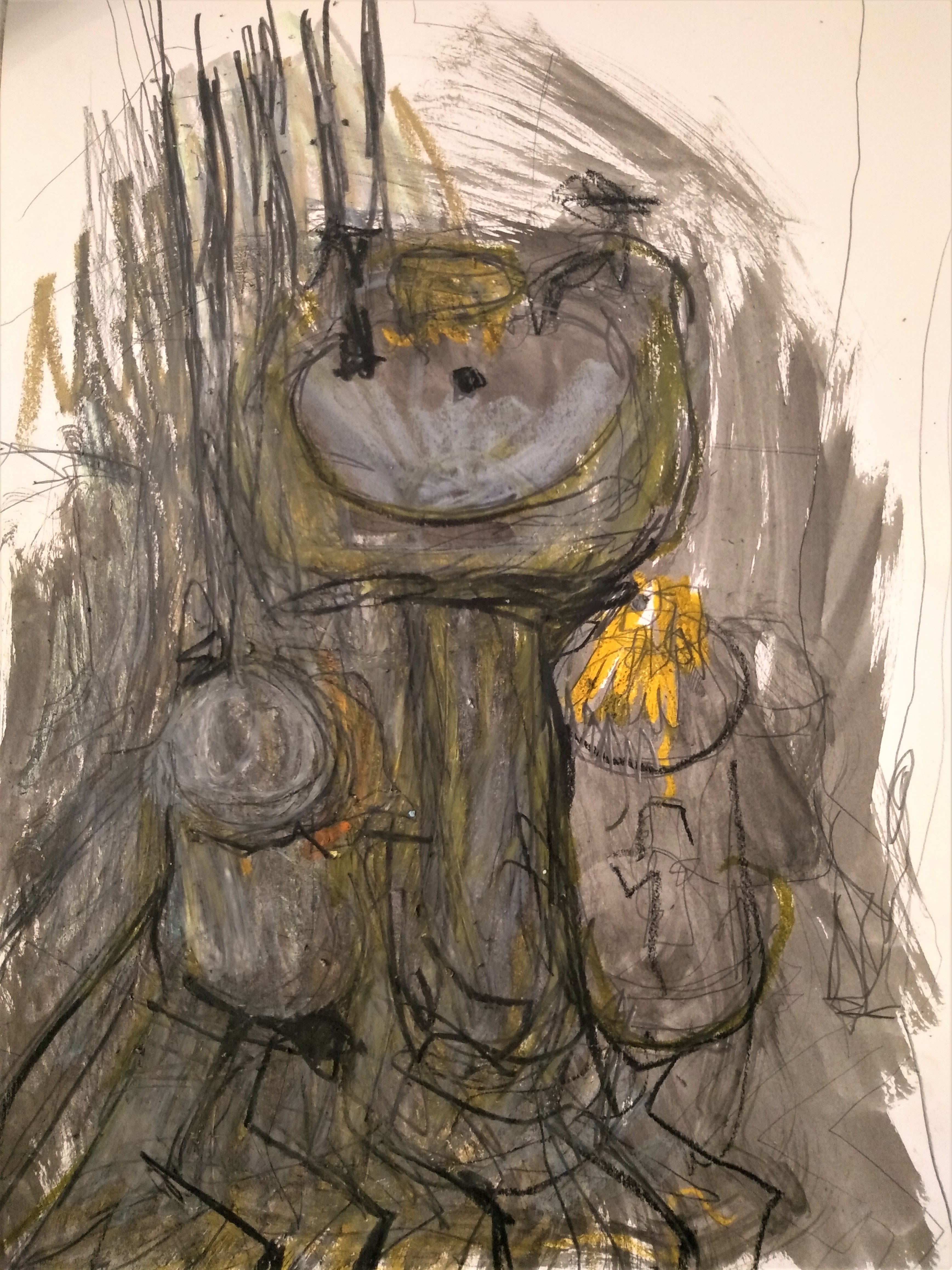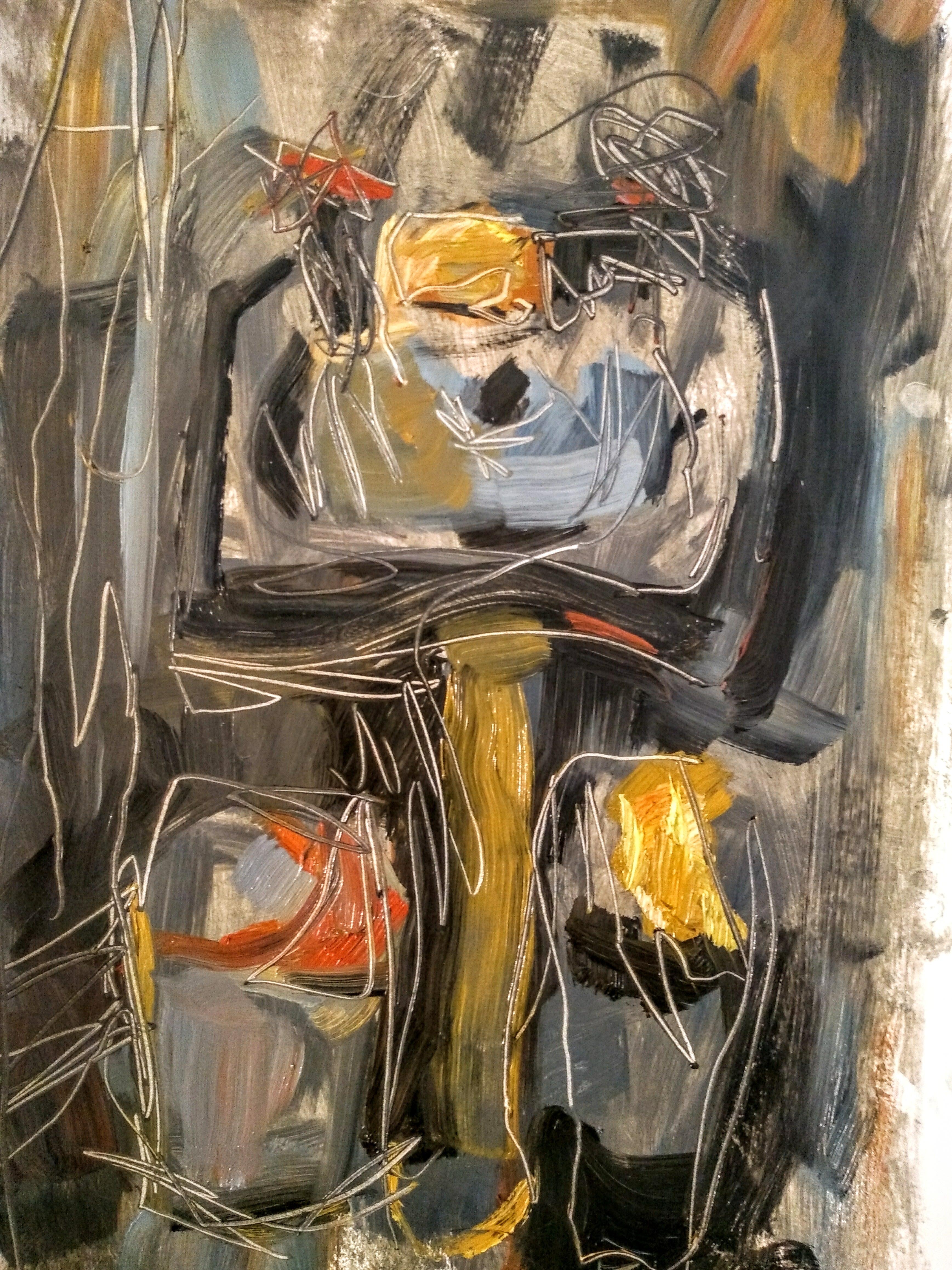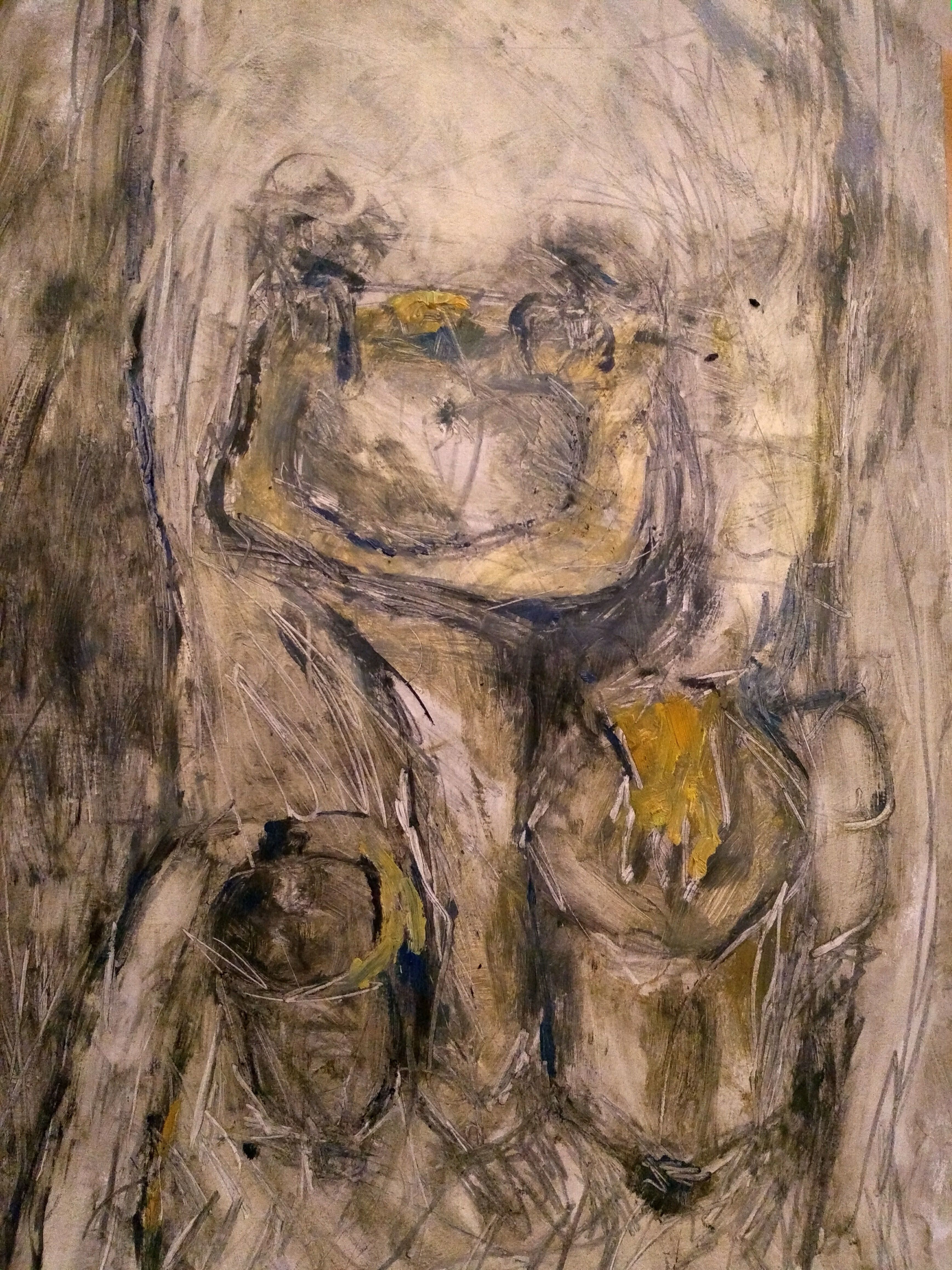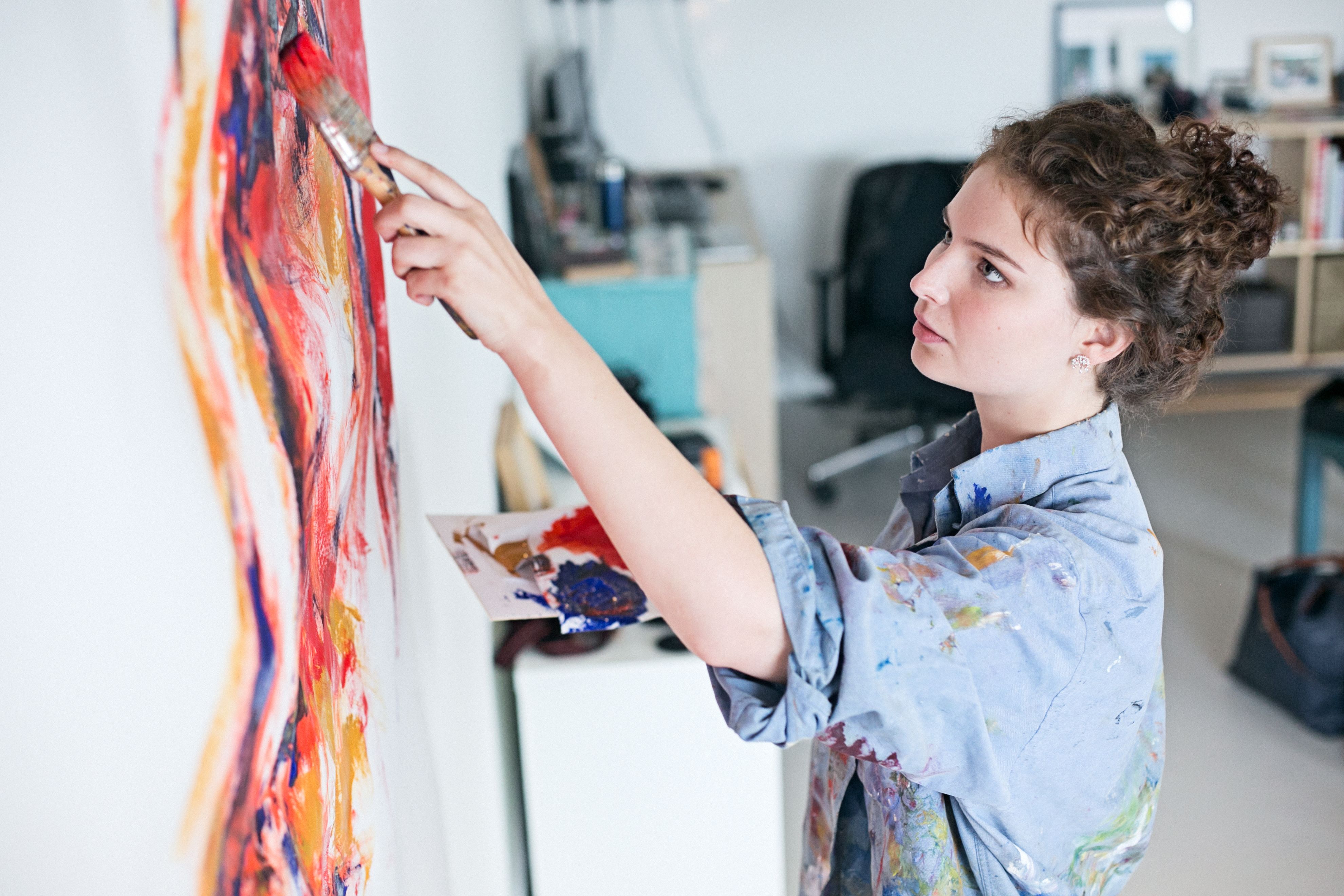An interview with
Claire Parker
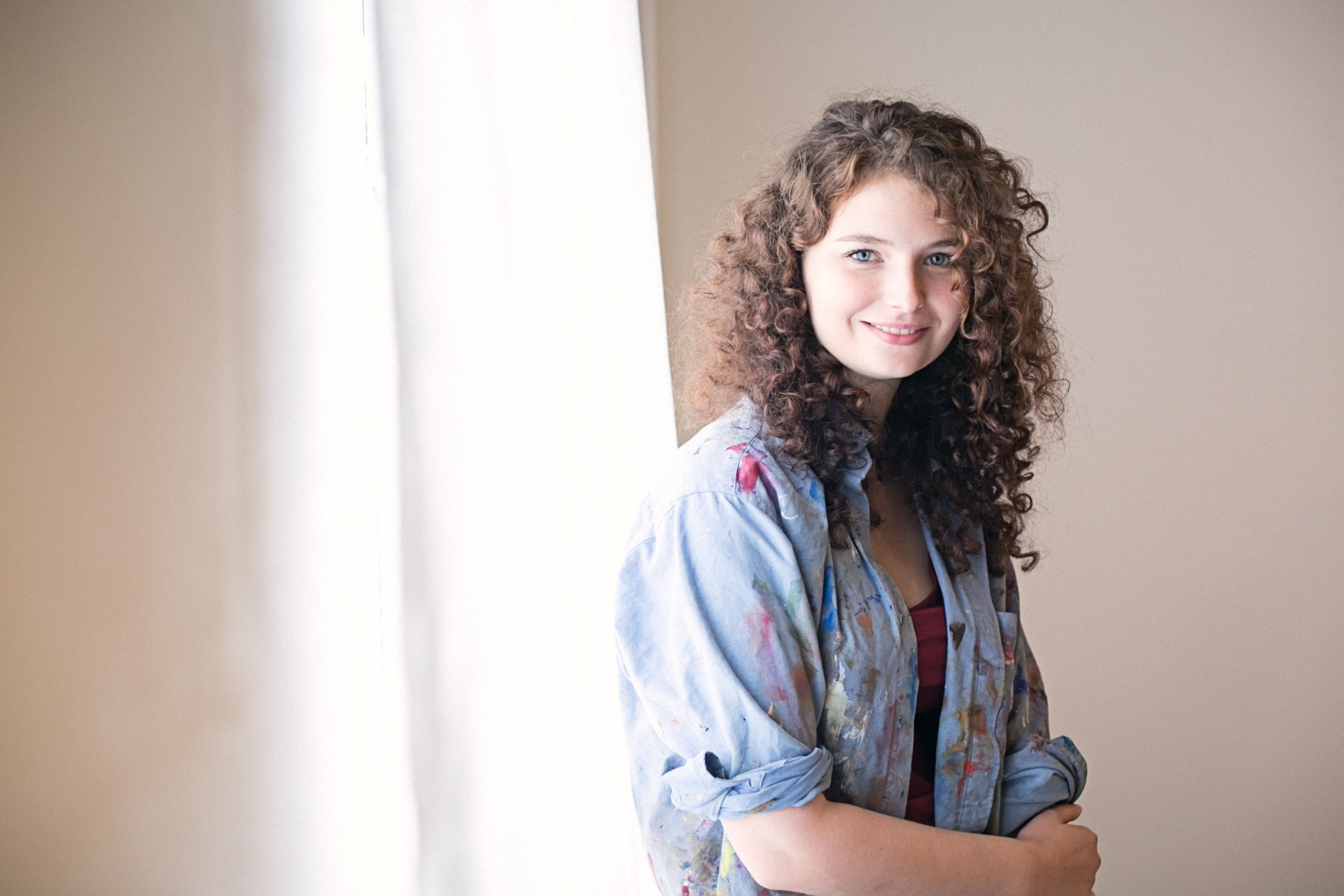
Claire Parker (2012) is a largely self-taught artist, based in Essex, who was a finalist in BBC One's The Big Painting Challenge. She spoke to us about translation, toothbrushes and learning to shake off the pursuit of perfection.
Tell me about your career as an artist so far. Do you have a proudest moment?
In some ways I barely feel qualified to call myself an artist! I don't have much formal training – though, perhaps strangely, my Modern Languages degree has helped me hugely in my work (and not only because I used to draw during lectures…). In 2015, while I was a student at Clare, I took part in a TV show on BBC One called The Big Painting Challenge – a sort of Bake Off for painting. We were taken all over the country and asked to make everything from still lifes to landscapes, portraits and cityscapes. Although I reached the final, the competitive element damaged my confidence a bit – after all, it only took one bad painting to be kicked off! But over the last five years I've slowly been rediscovering making, experimenting with my own marks and mistakes. In fact, I’ve found it’s the stuff that goes wrong, the accidents that happen along the way, which are more important than making a successful image. It's that space where unexpected things happen that interests me, and which I’m excited to chase.
As for my proudest moment, I took the plunge and quit my full-time job at the start of lockdown, and I decided to finally concentrate fully on making work – it’s changed everything, and I’m proud that I found the courage to do it.
You mentioned that your course at Cambridge helped to inspire you as an artist. How so?
I wrote my dissertation on the French painter Chardin, who, while many of his contemporaries were depicting grand scenes from mythology or history, painted pots, pans and plums. What I found fascinating about him was that these mundane objects were painted with a decidedly human dignity. In the last couple of years, I've been thinking about that again; now much of my work is about how far we can empathise with everyday objects.
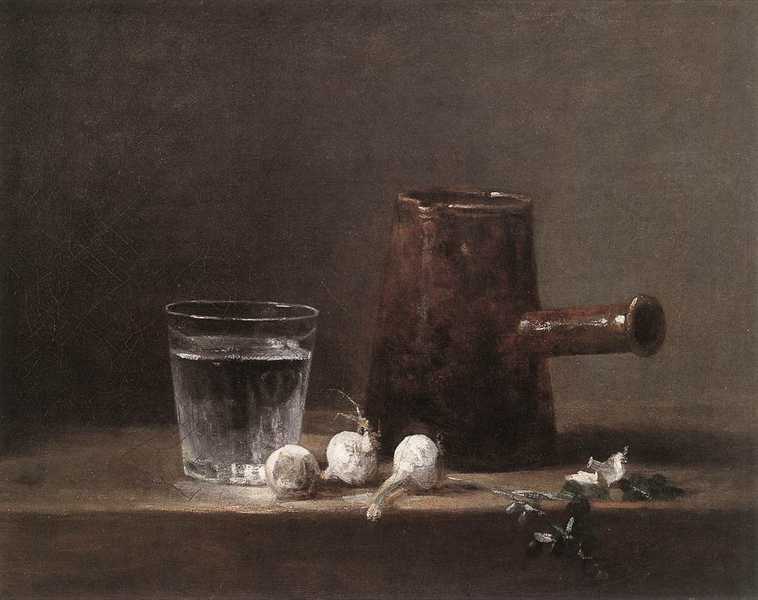
Glass of Water and Coffee Pot by Jean-Baptiste-Siméon Chardin
Glass of Water and Coffee Pot by Jean-Baptiste-Siméon Chardin
Studying translation has also had a big influence on me, because a perfect translation is impossible. It therefore becomes a question of sacrifice and compromise, a choice between large sweeping brushstrokes and tiny detailed ones, between a part and the whole. I feel like that's exactly what I'm doing when I'm drawing or painting: making decisions about what to keep in and what to leave out. Sometimes, and paradoxically, the more you leave out, the more you sacrifice, the more truthful the work feels.
How have your methods of working changed over time?
When I started making art I was a real perfectionist and was drawn to chasing the elusive likeness offered by portraiture. Now, I take a lot more risks: I see drawing and painting as more of as a process, rather than a means to an end. Nine out of ten times I make something that doesn’t work at all – but those ‘unsuccessful’ pieces and those experiments are as important, if not more important, than the ones that do, I think.
Now, rather than being drawn to portraits of people, it’s portraits of objects that excite me. Since lockdown, I feel like my relationship with everyday space and everyday objects has completely changed. I started measuring time not by the clock, but by how many pencils I'd used, how much toothpaste I had left in a tube or how many mugs of tea I’d had.
These mundane objects came to punctuate and define the day. I began to feel a huge amount of empathy for these things that were confined within the same four walls as I was.
One particular object that became a bit of an obsession was the sink in a downstairs toilet – the one I washed my hands in for 20 seconds every time I came inside. I shut myself in that tiny room and spent hours drawing or painting it each day, whether I felt happy, anxious, upset, excited or just bored. I ended up with hundreds of drawings of the same sink; it became a mirror to how I felt at the time, an image of the claustrophobia of lockdown, and, in a strange way,
a companion.
Are there any other series or themes you have been working on throughout lockdown?
Mostly my work is themed around the lives of objects, how they define our lives and have their own. This has grown alongside a fascination with ventriloquism. I'm interested in how the puppets are brought to life as soon as the ventriloquist starts interacting with them, and then, once the show’s over, they become objects again.
At the start of lockdown I couldn't bring myself to throw away any of the tea bags I used. I saved hundreds and hundreds of them and I would take a print of every single one on an enormous roll of paper. I just couldn't bear for them to be discarded and forgotten. It's kind of how life felt in lockdown – I just wanted to hang on to something.
The bathroom is an important space in my work; it's closed, isolated and intimate. I imagine the narratives among objects that take place there. There’s something about toothbrushes, in particular, that feels almost human to me. Sometimes, going into the bathroom, I’ll walk in on the pink one in an amorous embrace with the blue one. Other times, a group of them will stare up in awe at the monolith of their noisy electric peer. Or they might just stare wistfully out towards the bathroom door. These imagined narratives have turned into sculptures and playful animations.
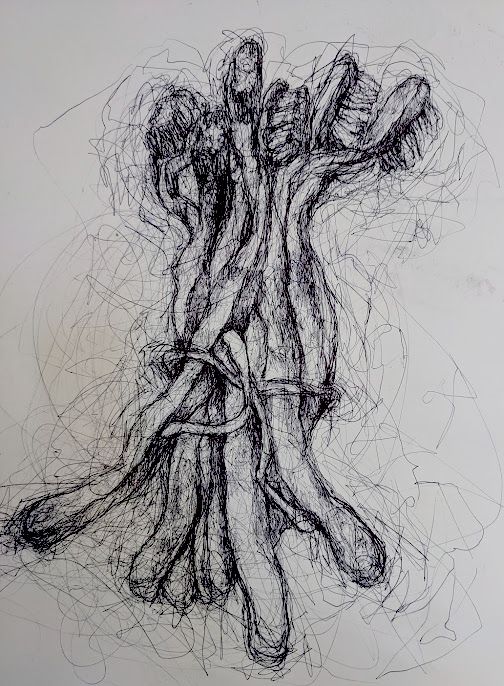
Do you have any mentors or significant figures in your life that support you?
I'm constantly inspired by my studio colleagues. I love walking past their spaces and seeing what they're making. One friend of mine pours vast amounts of thinned paint onto canvases, creating unexpected, organic-looking forms as it slowly dries. Another friend bought lots of painting-by-numbers sets and filled them all in meticulously – but with the wrong colours, which seemed to say something about the tension between following rules and that desire to rebel. A third has produced a whole body of abstract work based on the touch of a tap on the shoulder by her friend at a time when the two-metre rule was still in force.
During lockdown, there’s been a huge amount of very exciting work made by artists – and the funny thing is, it has been produced not in spite of being confined, isolated and restricted, but because of it. I reckon that in order to think outside the box, there needs to be a box in the first place, and lockdown was a heck of a box!
My family are hugely supportive, too. They don't mind me being a struggling artist, and they haven't tried to tell me to go out and get a 'proper' job!
It sounds as though your experience on The Big Painting Challenge was not a wholly positive one. What conclusions did you draw from being part of that process?
The series was repeated on the BBC last November; watching it back, I realised how little faith I had in my work atthe time. I just wanted to tick the right boxes and paint in the 'right' way. In the final episode I think I'd had enough of being told what to do. For my last piece, painted in Dartmouth, I ended up painting just one white rectangle and on a grey background, claiming that it encapsulated the relationship between man and the sea. Needless to say, I did not win! But I’m proud of that tiny act of rebellion. It makes me even more grateful now to have the freedom to create my own work.
If people wanted to know more, or see your art, where should they go?
You can find me on Instagram at @funny_little_marks, visit my website claireparkeart.co.uk or email me at
claire@claireparkerart.co.uk. Some of my work will also be on display at UNIT LONDON gallery in Mayfair, as part of the ‘Sequested Prize’.
I also run painting at drawing workshops for alumni at Gala Day each year – it’s a wonderful way to meet people and to stay connected to Clare College, which has a huge place in my heart!
